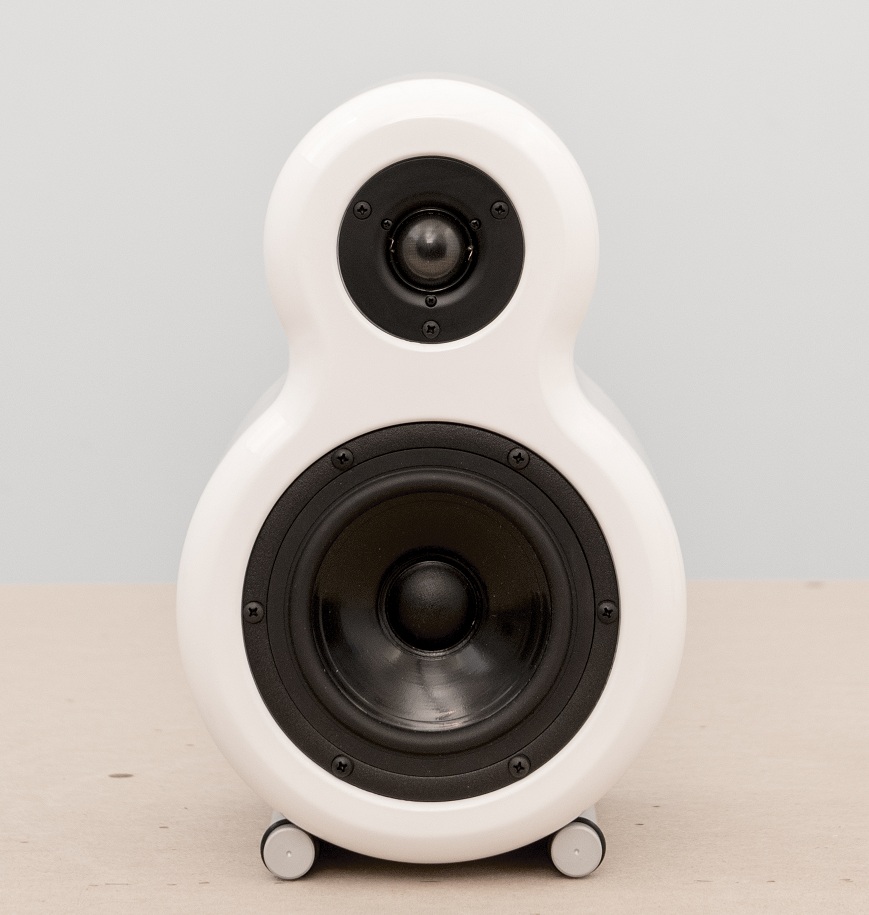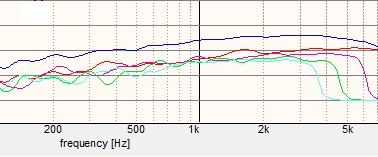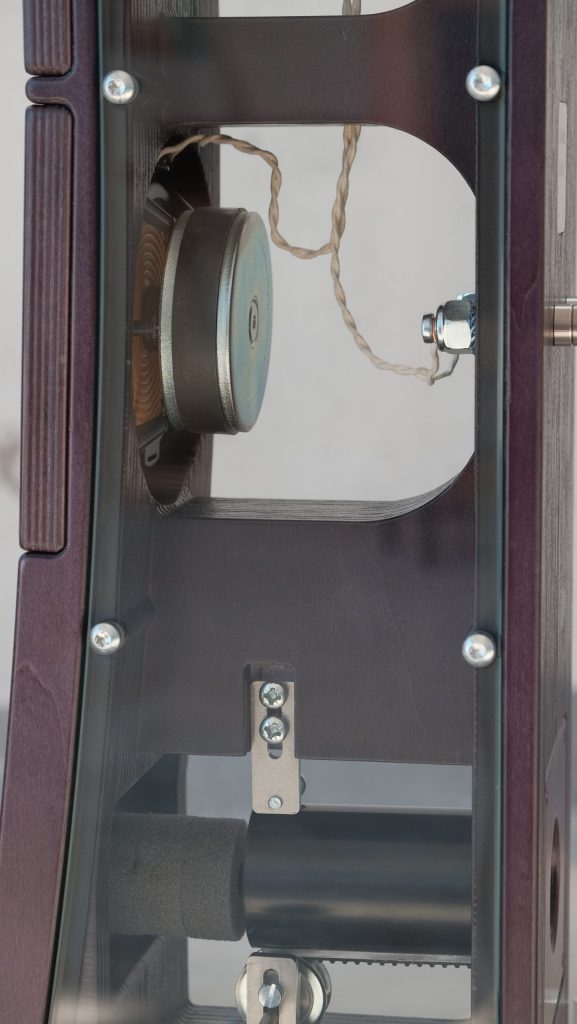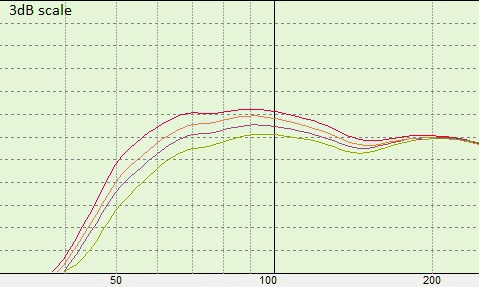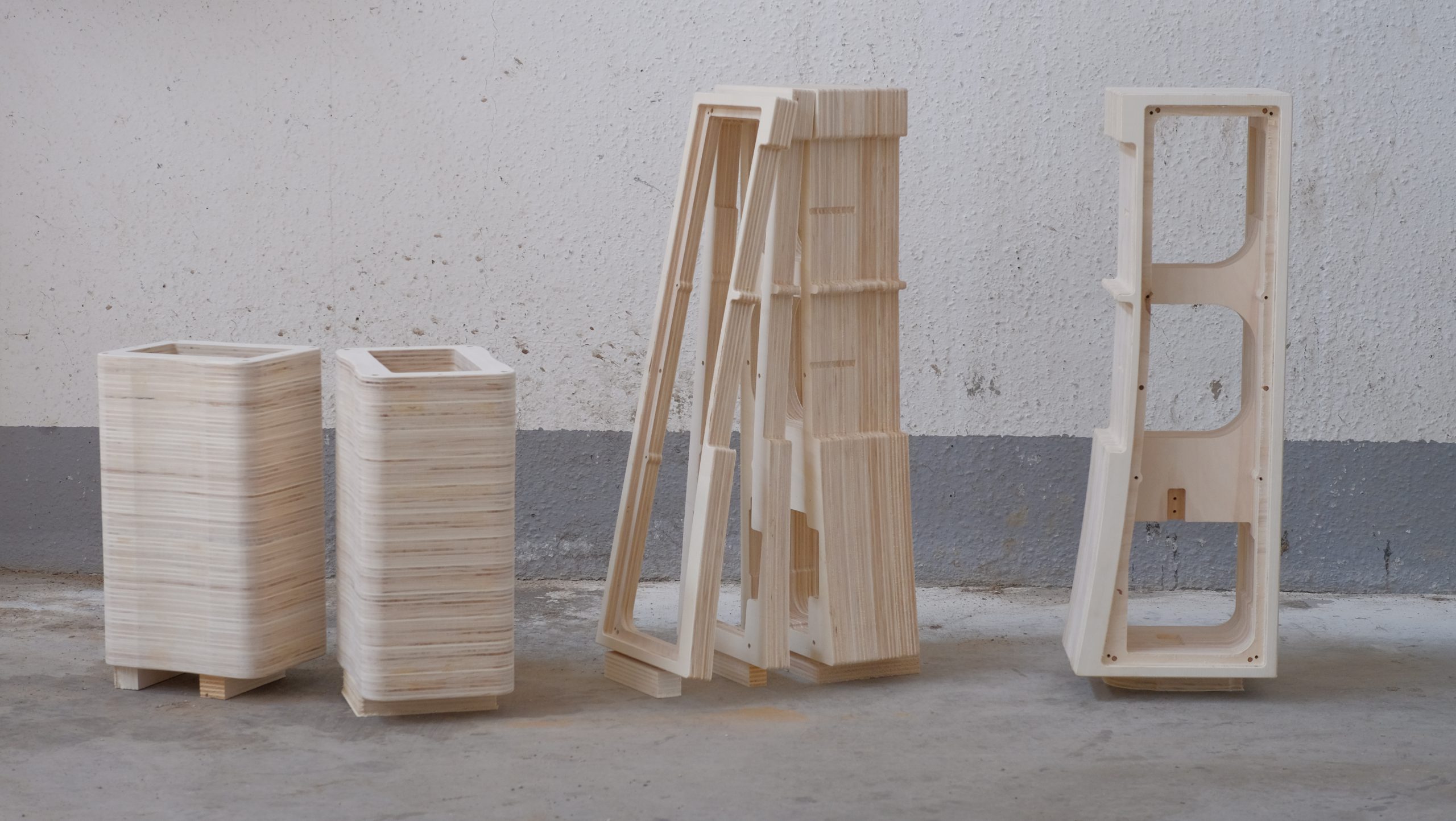The basis of good design is – paradoxically – the purpose of the design itself. When designing a floor-standing loudspeaker, for example, it is necessary to take into account the way it will be used (its purpose). A floor-standing speaker is likely to be used in positions more or less distant from the rear wall, in medium to large rooms; the optimal listening position shall be expanded horizontally.
Considering these assumptions as redundant or even limiting, denotes the classic attitude of those who believe that audio is a field in which it is enough to aspire to perfection or to an absolutist ideal. Not considering the importance of reconciling the needs of the real listener with the indissoluble laws of physics. There is only one certainty: the design of a loudspeaker is the result of undeniable compromises and the skill of the designer lies in optimising their coexistence.
The starting point of a bookshelf loudspeaker – as its name suggests – must take its final positioning into account: more or less close to the rear wall, in rooms of very variable size; the listening position must be as unrelated as possible to the reciprocal speakers’ and listeners’ positioning. Last but not least: the size of a bookshelf speaker should not exceed what its name suggests.
Starting points of Atomica Strato project:
-
Speakers close to the rear wall: bass emphasis and reduced soundstage depth.
-
Variable listening room dimensions: high power handling is needed.
-
Variable listening positions: optimal horizontal and vertical dispersion is needed.
-
Maximum speakers’ dimensions must not exceed 32 cm in both depth and height.
In the classic bookshelf loudspeakers, point 4 is considered the main design limit, since limited dimensions stand for limited internal volume, and therefore lack of bass; various tricks are adopted, such as reduced woofer’s dimensions or extended chassis’ depth. These solutions cannot fulfil the other points because: 4-inch (12 cm) woofers cannot handle adequate power (point 2); obtaining the highest possible bass gain is not the best way to deal with point 1; creating a box with a depth close to 30 cm does not take into due consideration point 4: many users would have to put the speakers against the rear wall.
Point 4 is Atomica Strato’s starting point and strength. It is possible to stay within these dimensions, and it can be even advantageous. After the first prototypes, the dimensions of the project have been fixed in a height of 31.5 cm, width of 20 cm, and depth not exceeding 25 cm including binding posts; this is the maximum possible depth to not interfere with rear reflex port.
The resulting internal volume allows for low register roll-off which compensate for bass emphasis, fulfilling point 1 (the prototype has been tested on 8 different positions, more or less close to the rear wall – both listening sessions and measurements were performed). Such internal volume also allows for a reflex tuned exactly to the fs of the driver, thus drastically reducing cone excursion and increasing power handling and dynamics according to point 2 (not to mention the benefits in terms of clearness and intermodulation distortion).
Point 3 takes advantage of a reduced front wall, because baffle diffraction is optimised across the relevant frequency range. Polar dispersion has been further enhanced with the unmistakable Strato’s smoothed edge. Such uniform dispersion can also compensate for the soundstage depth reduction described in the second part of point 1, as the creation of a very diffuse sound field and the presence of uniform first reflections make up for the above-mentioned lack.

Oblique polar dispersion at 0° – 30° – 45°. 10 dB scale with 1/3 oct. smoothing.
Great linearity independent of listening position is also due to the special crossover network, which required countless listening and testing sessions.
The special shape of the Atomica Strato loudspeakers allows for the creation of incredibly rigid and therefore energy-efficient and dynamic chassis. Atomica Strato has an efficiency of 88 dB 1W/1m, which is truly unique for a bookshelf speaker and makes it suitable for even low-wattage amps. A special self-levelling aluminium support enhances stability and dampening.
